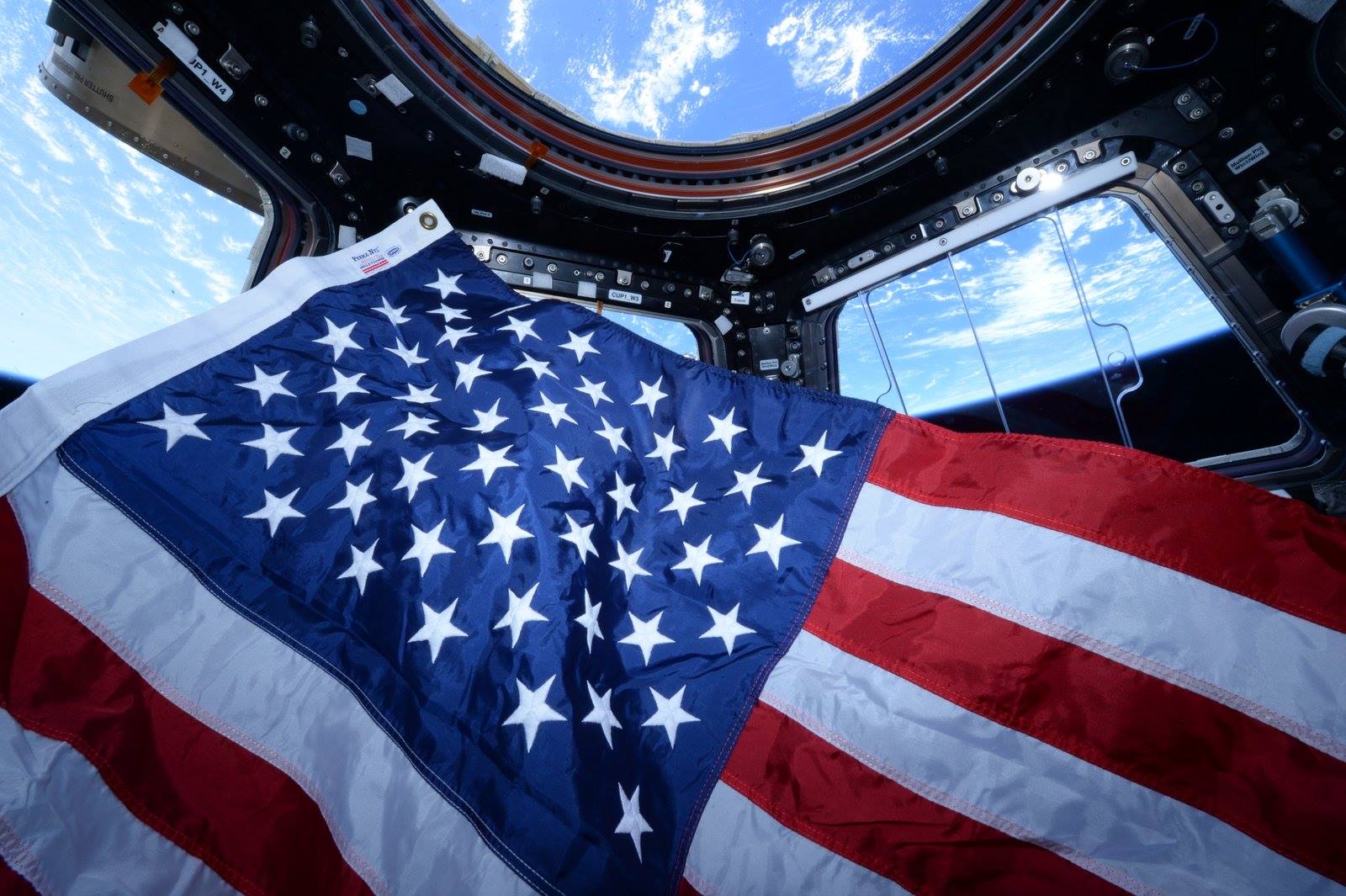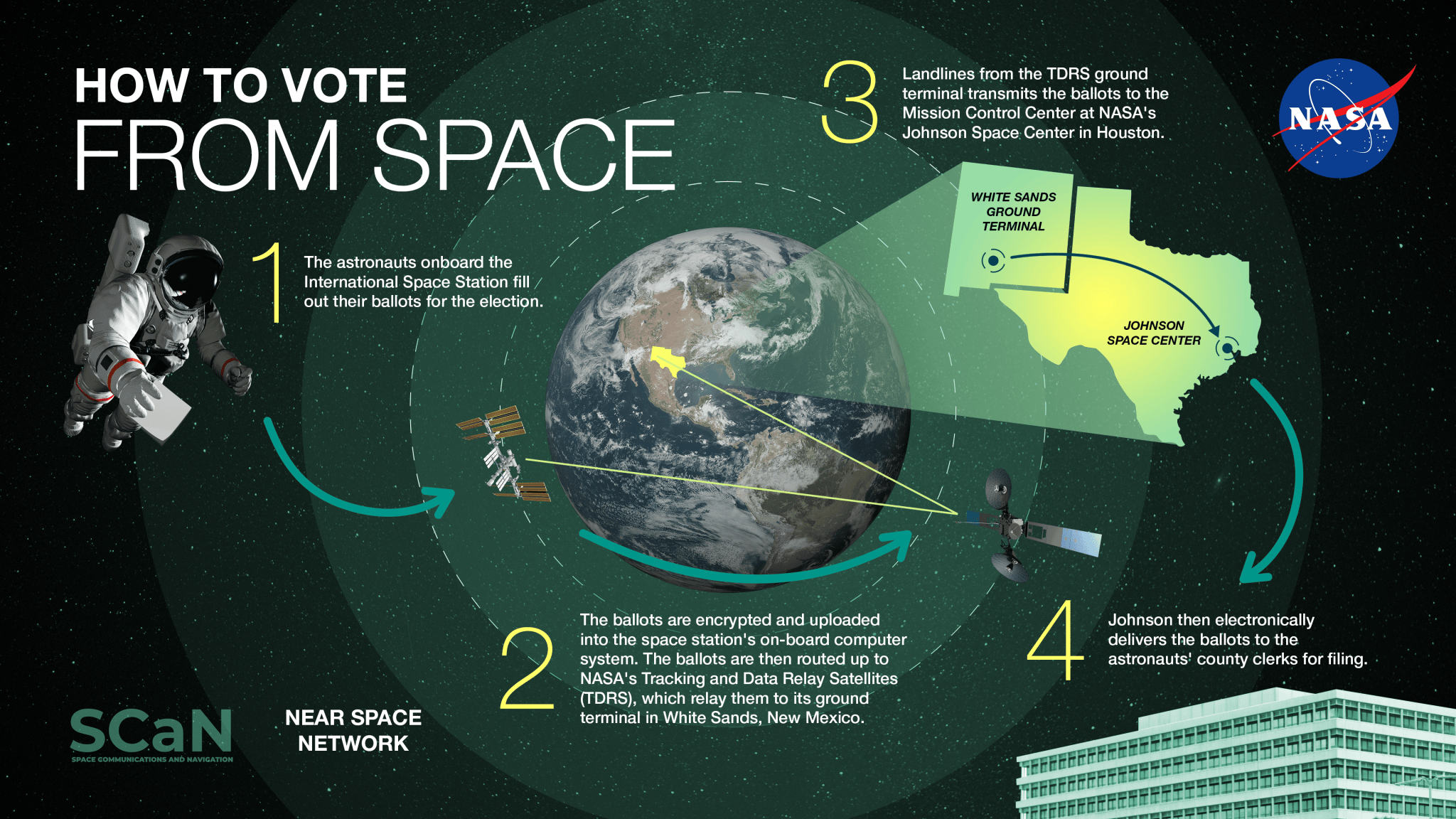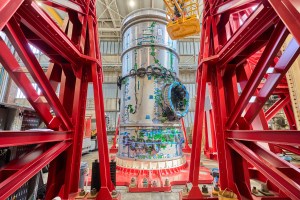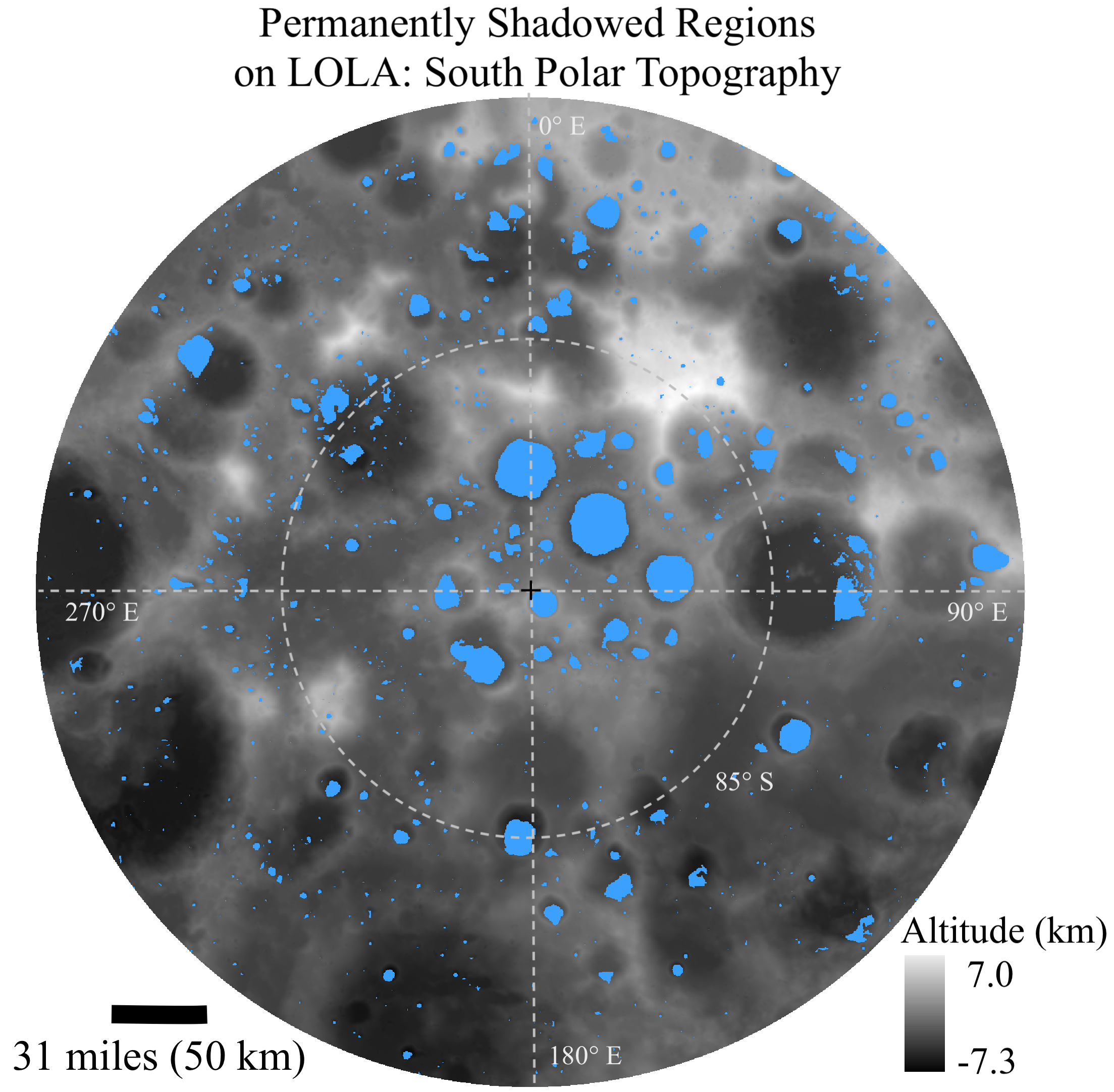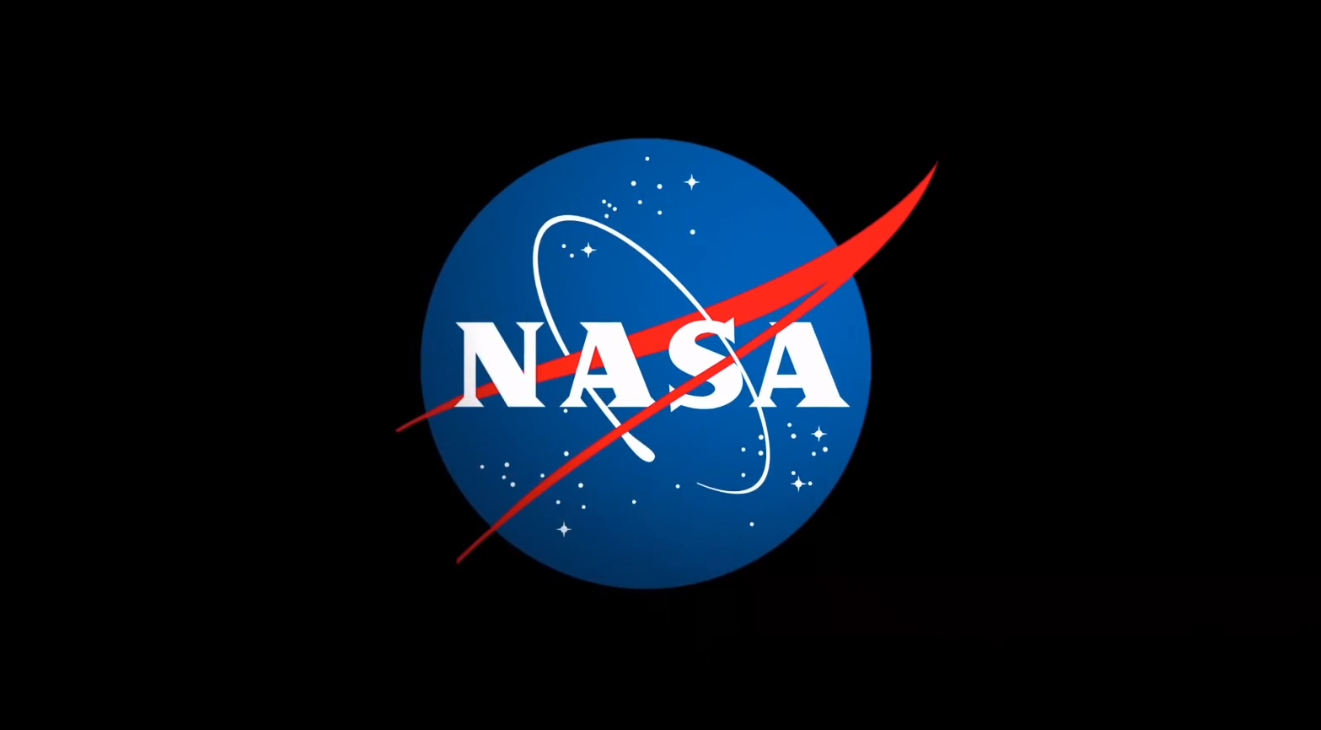How NASA Astronauts Vote from Space Aboard International Space Station
NASA astronauts aboard the International Space Station have the opportunity to vote in general elections through absentee ballots or early voting in coordination with the county clerk’s office where they live. So, how is voting from space possible? Through NASA’s Space Communication and Navigation (SCaN) Program. Similar to most data transmitted between the space station […]

3 min read
Preparations for Next Moonwalk Simulations Underway (and Underwater)
NASA astronauts aboard the International Space Station have the opportunity to vote in general elections through absentee ballots or early voting in coordination with the county clerk’s office where they live.
So, how is voting from space possible? Through NASA’s Space Communication and Navigation (SCaN) Program.
Similar to most data transmitted between the space station and the Mission Control Center at NASA’s Johnson Space Center in Houston, votes cast in space travel through the agency’s Near Space Network, managed by NASA’s Goddard Space Flight Center in Greenbelt, Maryland. The network connects missions within 1.2 million miles of Earth with communications and navigation services – including the space station.
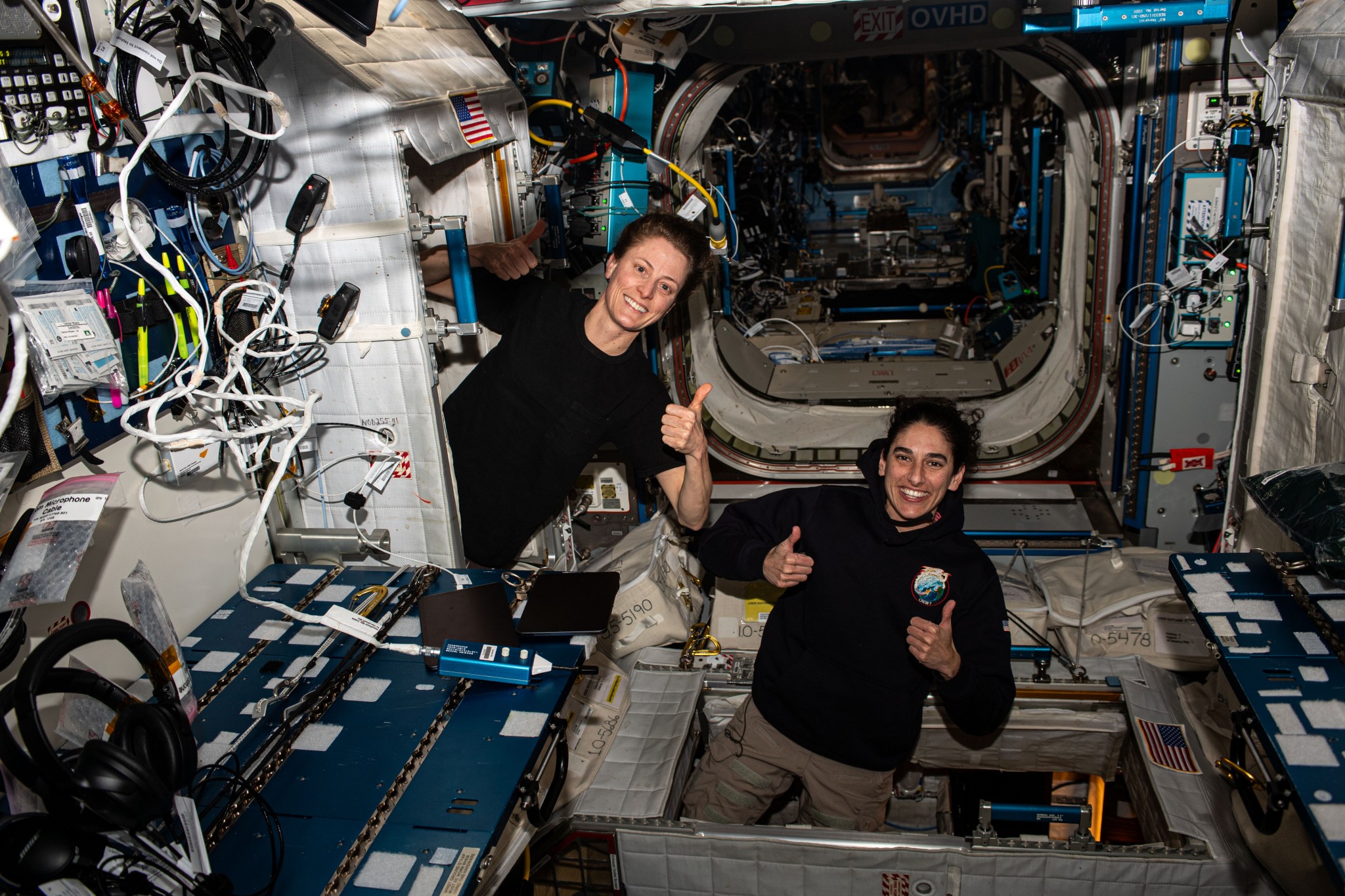
Just like any other American away from home, astronauts may fill out a Federal Post Card Application to request an absentee ballot. After an astronaut fills out an electronic ballot aboard the orbiting laboratory, the document flows through NASA’s Tracking and Data Relay Satellite System to a ground antenna at the agency’s White Sands Test Facility in Las Cruces, New Mexico.
From New Mexico, NASA transfers the ballot to the Mission Control Center at NASA Johnson and then on to the county clerk responsible for casting the ballot. To preserve the vote’s integrity, the ballot is encrypted and accessible only by the astronaut and the clerk.
Astronauts have voted in U.S. elections since 1997 when the Texas Legislature passed a bill that allowed NASA astronauts to cast ballots from orbit. That year, NASA astronaut David Wolf became the first American to vote from space while aboard the Mir Space Station. NASA astronaut Kate Rubins became the latest astronaut to vote in a presidential election, as she voted aboard the International Space Station in November 2020.
Astronauts forego many of the comforts afforded to those back on Earth as they embark on their journeys to space for the benefit of humanity. Though they are far from home, NASA’s networks connect them with their friends and family and give them the opportunity to participate in democracy and society while in orbit. While astronauts come from all over the United States, they make their homes in Texas so they can be near NASA Johnson’s training and mission support facilities.
For more than two decades, astronauts have continuously lived and worked aboard the space station, testing technologies, performing science, and developing skills needed to explore farther from Earth. Astronauts aboard the orbiting laboratory stay connected with Earth and their civilian lives back home by communicating with mission control through the Near Space Network. This development in communication ultimately can benefit humanity and lay the groundwork for other agency missions, like NASA’s Artemis campaign, and future human exploration of Mars.
Learn more about the International Space Station online:
Share
Details
Related Terms
What's Your Reaction?



















.jpg?#)























